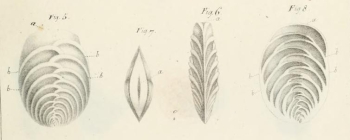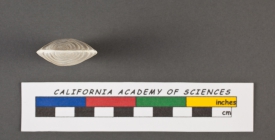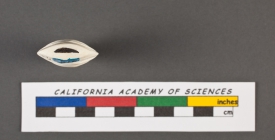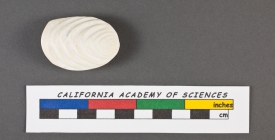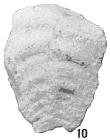
| Intro | | About | | Wiki | | Search traits | | Data explorer | | Literature | | Definitions | | Sources | | Webservices | | Statistics | | Feedback | | Editors | | Log in |
Deep-Sea taxon detailsVulvulina d'Orbigny, 1826
112395 (urn:lsid:marinespecies.org:taxname:112395)
accepted
Genus
marine,
recent + fossil
Orbigny, A. D. d'. (1826). Tableau méthodique de la classe des Céphalopodes. <em>Annales des Sciences Naturelles.</em> vol. 7: 96-169, 245-314., available online at http://biodiversitylibrary.org/page/5753959
page(s): p. 264 [details]
Hayward, B.W.; Le Coze, F.; Vachard, D.; Gross, O. (2025). World Foraminifera Database. Vulvulina d'Orbigny, 1826. Accessed through: Glover, A.G.; Higgs, N.; Horton, T. (2025) World Register of Deep-Sea species (WoRDSS) at: https://www.marinespecies.org/deepsea/aphia.php?p=taxdetails&id=112395 on 2025-05-23
Glover, A.G.; Higgs, N.; Horton, T. (2025). World Register of Deep-Sea species (WoRDSS). Vulvulina d'Orbigny, 1826. Accessed at: https://www.marinespecies.org/deepsea/aphia.php?p=taxdetails&id=112395 on 2025-05-23
Date action by
original description
Orbigny, A. D. d'. (1826). Tableau méthodique de la classe des Céphalopodes. <em>Annales des Sciences Naturelles.</em> vol. 7: 96-169, 245-314., available online at http://biodiversitylibrary.org/page/5753959
page(s): p. 264 [details] basis of record Gross, O. (2001). Foraminifera, <B><I>in</I></B>: Costello, M.J. <i>et al.</i> (Ed.) (2001). <i>European register of marine species: a check-list of the marine species in Europe and a bibliography of guides to their identification. Collection Patrimoines Naturels,</i> 50: pp. 60-75 (look up in IMIS) [details] additional source Neave, Sheffield Airey. (1939-1996). Nomenclator Zoologicus vol. 1-10 Online. <em>[Online Nomenclator Zoologicus at Checklistbank. Ubio link has gone].</em> , available online at https://www.checklistbank.org/dataset/126539/about [details]  Present Present  Inaccurate Inaccurate  Introduced: alien Introduced: alien  Containing type locality Containing type locality
From editor or global species database
Diagnosis Test free, flaring or broad and elongate, lozenge shaped to rhomboidal in section, margins sharply angled, early portion planispirally coiled at least in the microspheric generation, later with very broad and low, biserially arranged chambers that are strongly curved backwards toward the proloculus, and in welldeveloped specimens may be uniserial in the final stage, sutures distinct; wall finely agglutinated, surface smoothly finished; aperture a broad low interiomarginal arch in the early stage, later becoming terminal, a narrow elongate slit. ?U. Cretaceous (Campanian); Paleocene to Holocene; cosmopolitan. (Loeblich & Tappan, 1987, Foraminiferal Genera and Their Classification) [details]
|
